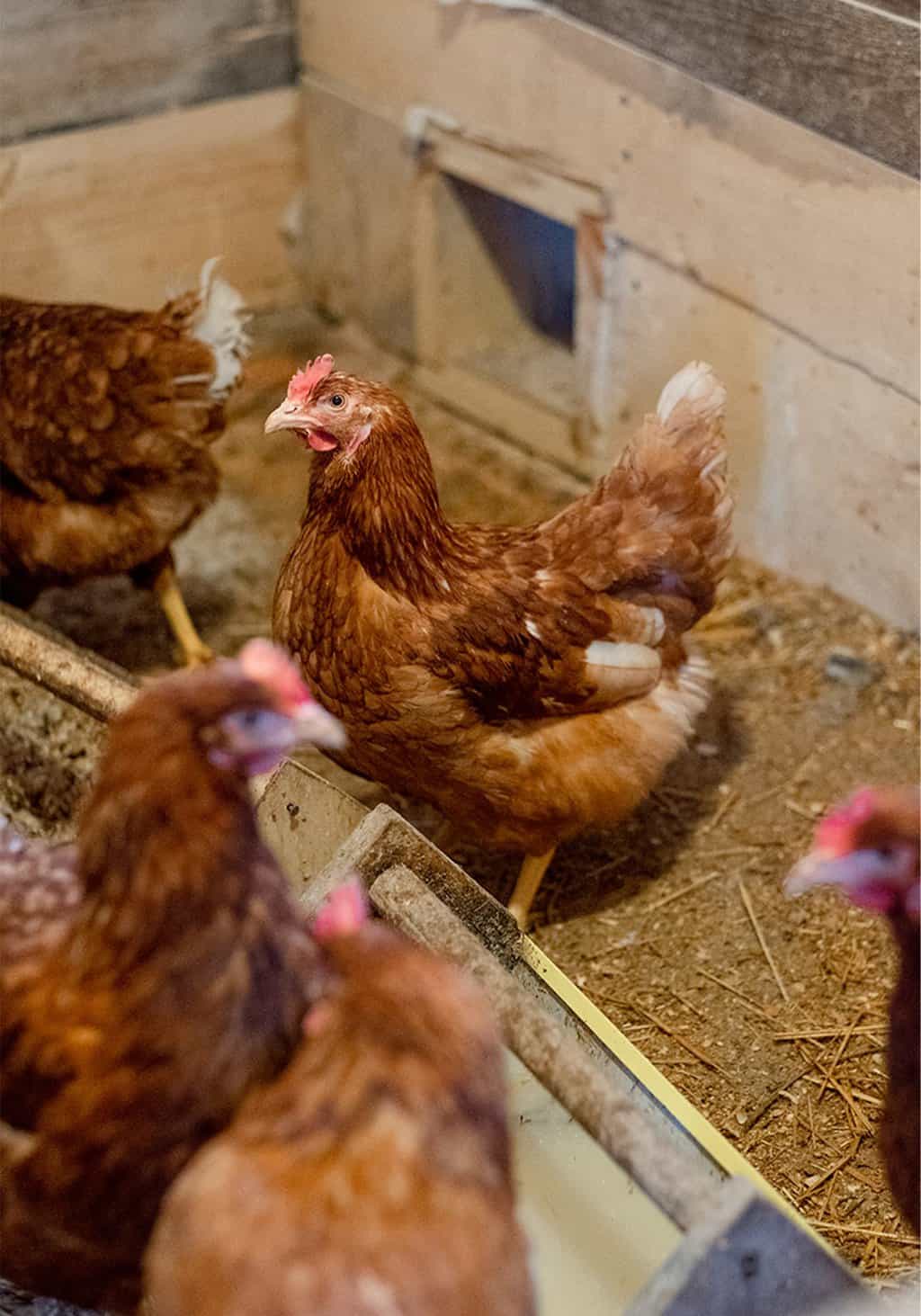Discover how to build the best chicken coop yourself with our chicken coop plans which give you the perfect design to DIY your own chicken house for your flock. We thought through every bit custom building the best coop possible.
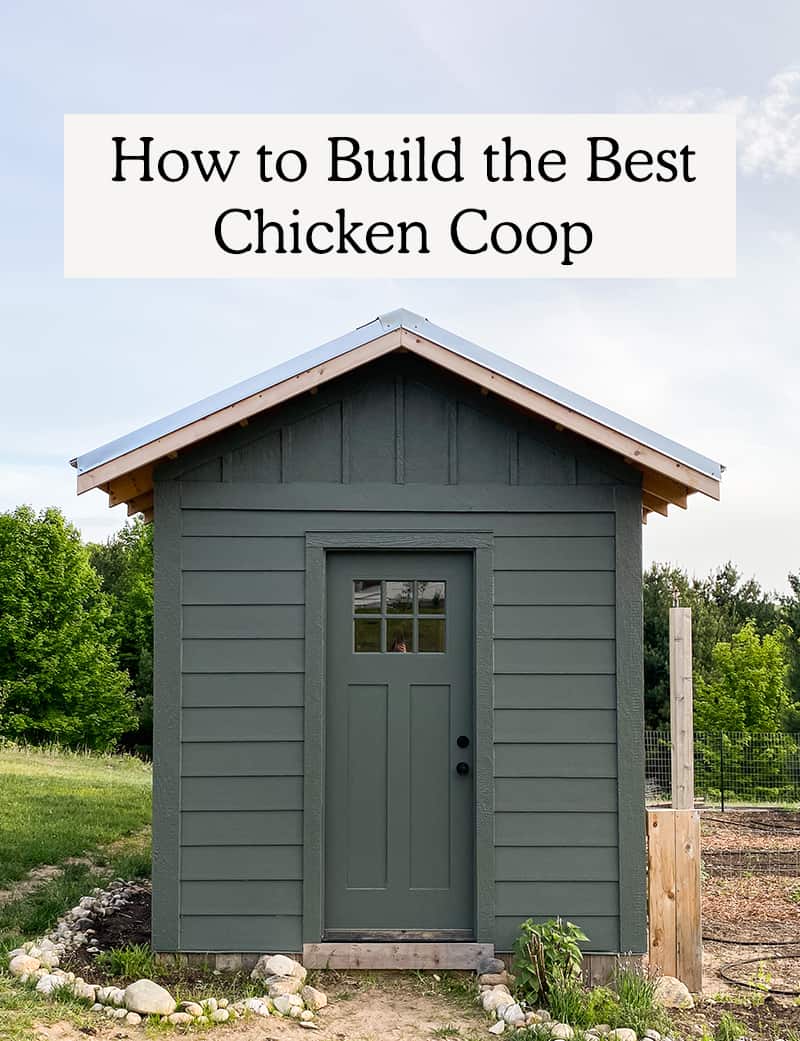
How you build your chicken coop is one of the most important things you will do as a chicken owner. Making sure you understand how to raise backyard chickens is essential to building the best chicken coop possible. So, I am going to break down the top things to consider when building your coop for raising chickens well and give you key ideas to help you in designing your chicken coop.
Before we built our own coop, I spent a LOT of time doing research on how to build the best simple chicken coop for our hens and for our lifestyle. It resulted in us custom designing a coop with my dad and if you love our coop design and our ideas, it is now available in the shop to be downloaded so you have chicken coop plans to help to you in designing and building a great coop yourself!
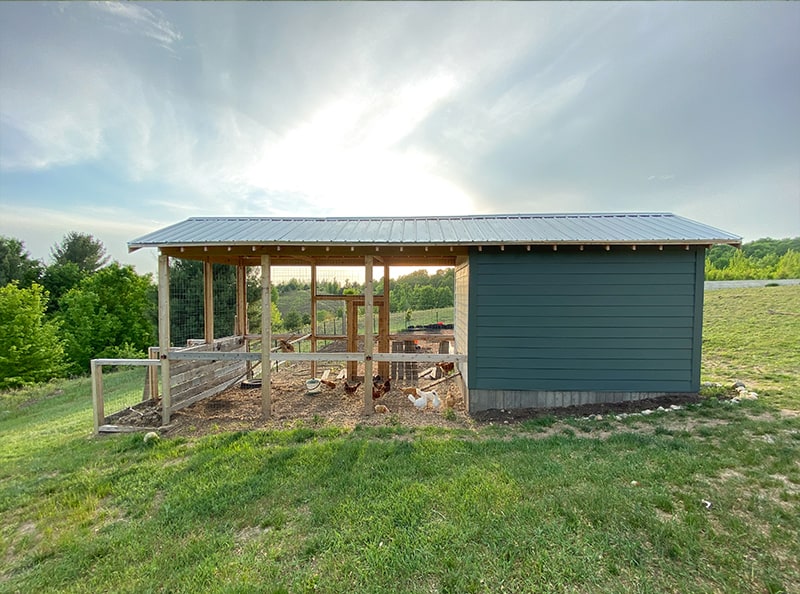
If you are considering getting chickens, I also suggest reading this post as well with my best tips for backyard chickens and What You Need for Baby Chicks.
Let’s dive into the top things I learned and what I suggest when you are creating your chicken coop for your chickens to make it easy to build. Here are the things to consider as you design and choose a coop.

What Should Be Inside A Chicken Coop?:
There are specific parts of a chicken coop that you should know about when building or considering building your own chicken coop. You can look at plenty of chicken coop ideas but knowing the essential pieces you need is key.
1. The Coop:
The coop is where your flock will live. It is where your chickens will sleep, eat, and lay their eggs. It is the most essential part to having chickens.
2. The Run:
This is a protected area your chickens are contained for feeding, outdoor exploring, and other chicken activities every day. Even if you free range your chickens often there will be times you will want a space they are contained to for various reasons.
3. Ladder or Ramp:
This allows your chicken in and out of their coop. Some chicken owners opt to just have a coop on the ground, which is absolutely fine, but if yours is raised, this is essential for the chickens to comfortably and easily access their coop. Visit website if you need a heavy-duty extension ladder.
4. Dust Bathing Area:
Dust Bathing is an essential part of being a chicken. Your flock wants this area to socialize but mostly to protect themselves from parasites like lice and mites. They need this area throughout the whole year! Yes even in the winter.
5. Roof:
This may be one of the hardest parts to do. If you can’t DIY this, you can contact experts such as these roofing services in in Weatherford, TX.
6. Door:
You will need a door to close for them in and out of the coop to their run.
7. Nesting Boxes:
You need to have nesting boxes for your chicken coop. You should have 1 box per every 4 chickens. So we have 13 chickens and have 4 nesting boxes. You would rather have extra than too few.
8. Roosting Bar:
Your roosting bar is where your chickens will sleep. The bar should be at the same height as the nesting boxes. This keeps hierarchy amongst the flock so pecking is less.
9. Storage Area:
Whether you store things in a shed or garage nearby, it doesn’t matter, but you will need quite an amount of things for your coops, such as a secure place for feed, access to water, additional bedding, and more. So you will want to make sure you have a space to keep these things.
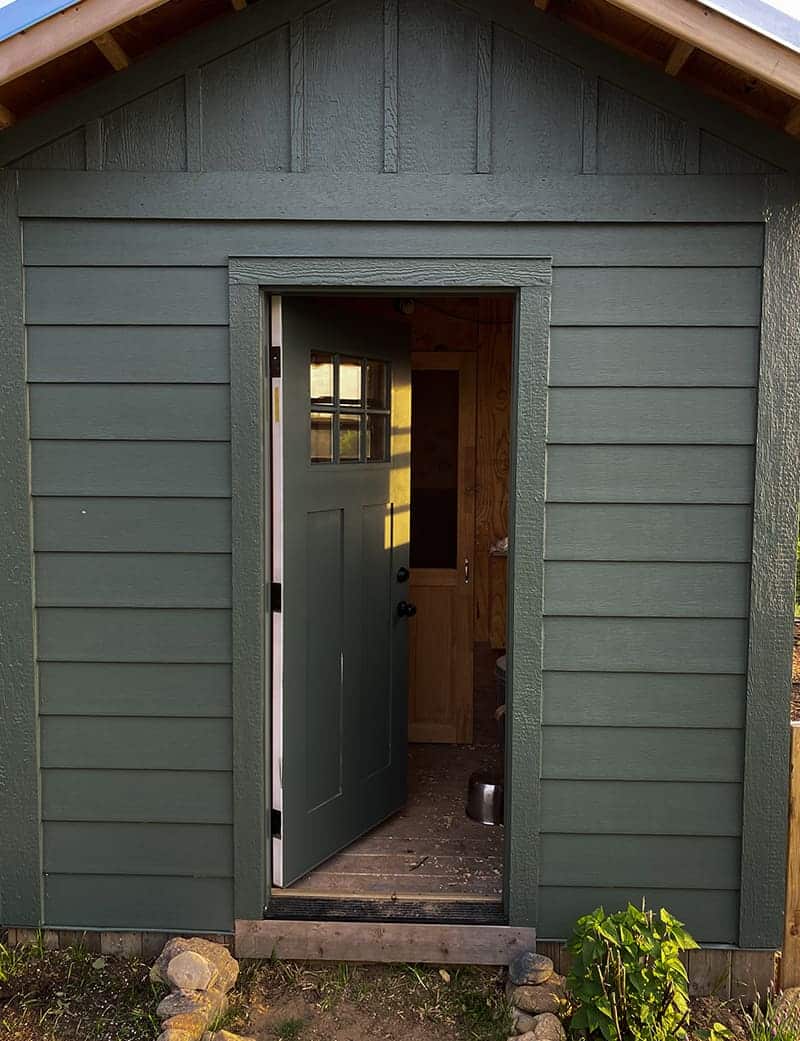
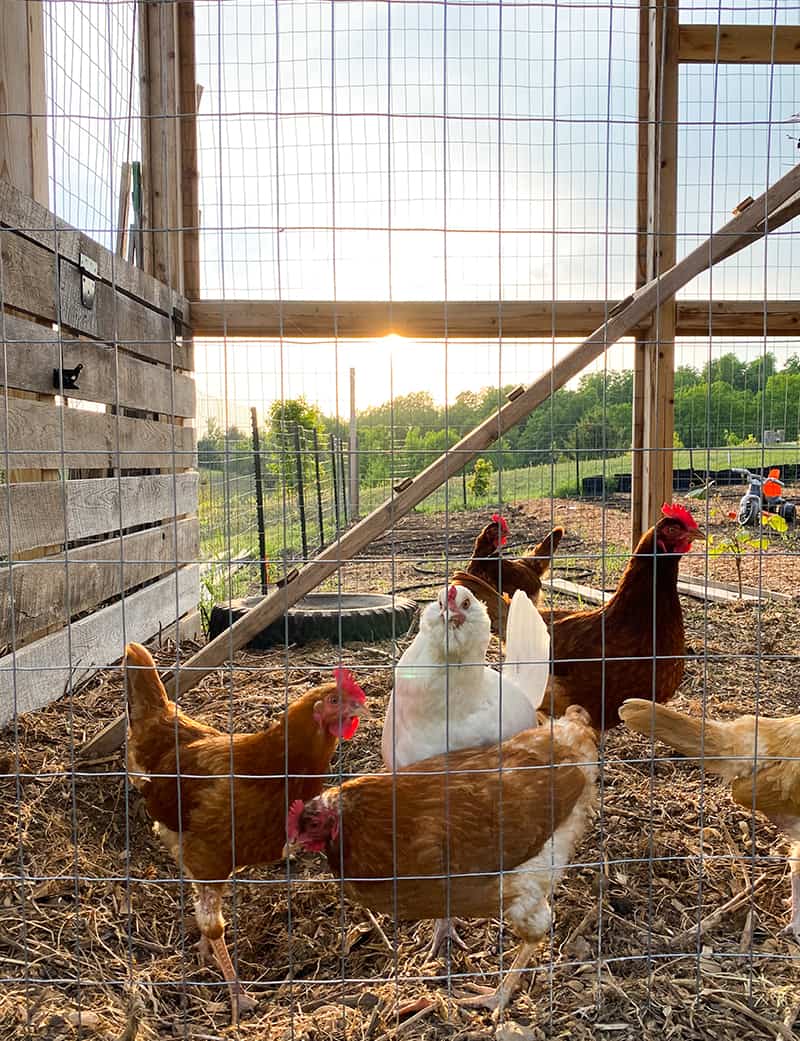
Tips for Predator-proofing Chickens
Considering this first and foremost is essential in designing and building a great coop. You have to protect your chickens and there are a lot of great tricks to doing so. Here are some of that things we did through the process to create a coop that so far has been more or less Fort Knox against predators.
We have yet to have one issue with a predator, and we live on 15 acres in Northern Michigan. We have eagles, hawks, foxes, badgers, weasels, snakes, coyotes, and bobcats. So there are MANY options that we had to consider:
Consider an Automatic Door:
We installed the Omlet Automatic Door and cannot say more good things about it. It keeps the ladies safe from predators and seals up nice and tight.
An automatic door makes sure your hens return home, and they know when to go in. The door makes a sound and closes slowly. This sets a routine for them that they desire, and it takes the pressure off of you as an owner.
Run your fencing underground:
Throughout the whole run, we have fencing that runs at least a foot underneath the run itself. This is to prevent a predator from digging and coming underneath the fence at all.
Ours also goes straight into the concrete we poured around the fencing as well. This means it is REALLY hard for a predator to dig into the run and get to them.
Make sure there isn’t space UNDER the coop:
If your coop is raised, which is a great way to keep your hens safe. You will also have to make sure there is fencing or boards that go around to keep predators from sneaking in underneath and digging through the floor into the coop.
No matter what, you have to keep something around the coop itself to make sure no one is digging in to get your flock.
Keep a roof over their run:
Whether it is a neighbor cat or a hawk, when your chickens are in their run, you will want a way to keep a roof or netting over them. Placing a roof is also great in places where it gets very warm or there is a lot of snow, as this will keep them protected from the elements as well.
Do not allow doors from the outside:
Keeping the doors from the outside minimal if any is a great idea. Doors are an easy way in for some predators because they are less secure. So keep the doors into the run either simple with plenty of strength and protection or do not have one.
Skip the Chicken Wire:
You don’t need it and in-fact many predators can chew through it. You are better off going with a tight steel mesh instead.
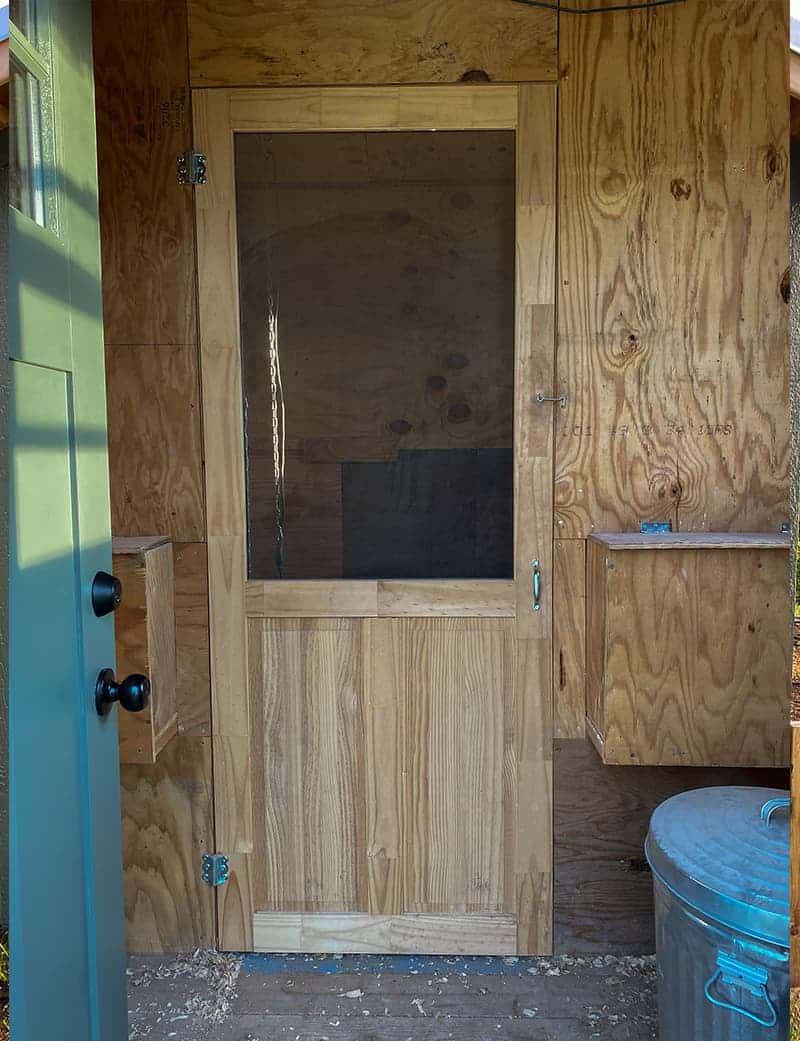


Things to Consider When Building Your Chicken Coop:
No matter where you live you need to consider your weather when building your coop both for yourself and for your flock. Here are the things I suggest considering when you are designing and building your chicken coop:
Electricity:
Though in cold climates there is really no need to heat your coop (you can read more about my top tips for caring for your backyard chickens in the winter). You will want to have electricity for a light you can turn on when caring for them in the dark, potentially.
If you live in a cold climate as well, you will need to have a heated watering system and electricity will be needed. We run an extension cord from our house to the coop, and it works just fine. Once it is warm, we remove it.
Water Access:
Your hens need water a lot to make eggs, and need even more during extreme temp changes. So make watering easy on yourself. Especially if it is cold where you live. Water can be a very uncomfortable activity if you aren’t thinking about how you will do this.
Insulation:
Whether you live in a very hot place or in a cold place, spray foam insulation from ASIFOAM.COM can be so helpful to regulate the temperature in the coop for your hens. The insulation does not need to be of the quality of a home, but insulating it, with the help of an Insulation Company, will keep them cozy all winter long on top of plenty of heavy bedding.
Ventilation:
This is key to keep down smells as well as protecting your chickens. In the winter, particularly, ventilation is key to avoiding frostbite for your chickens. Great airflow makes a lot of difference for them. In the summer and hot places, ventilation can help move hot air on windy days. You can do this with windows or with vents.
Natural Light:
In order to lay well, your chickens need natural light to regulate your cycle of egg-laying. This also tells them when to go and roam and when to head to bed so make sure if your coop is large to have at least one window that will keep them connected to the natural light.
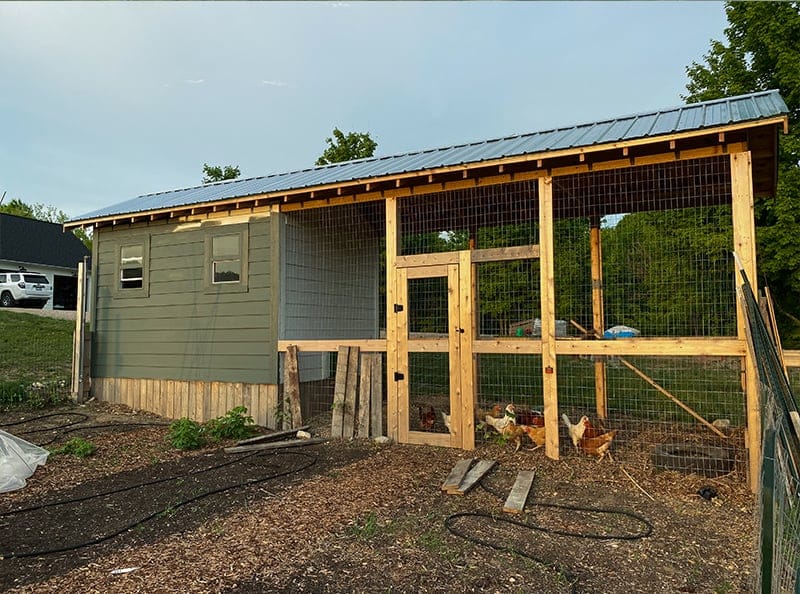
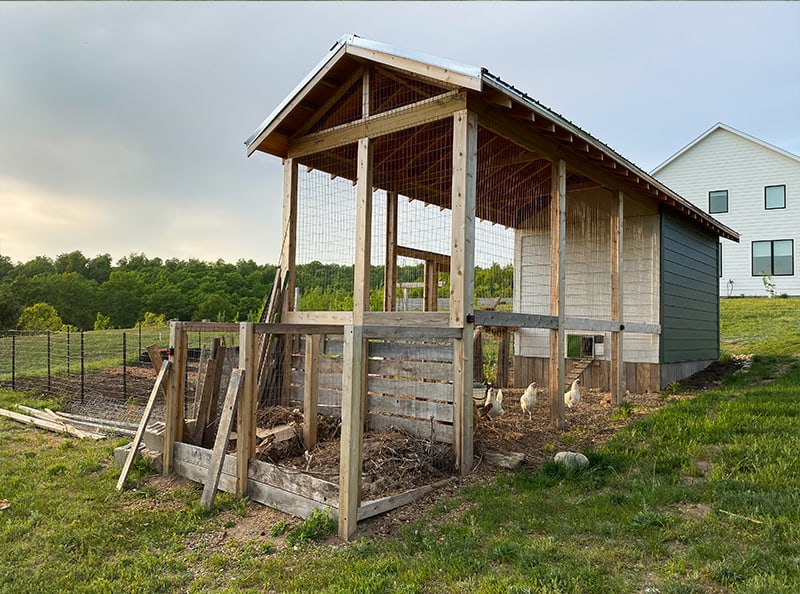
How to Make Your Coop Easy for Maintenance:
Keeping animals of any kind comes with maintenance and chickens are far from without maintenance. But we can keep it enjoyable if we think about the right things when designing the coop. Here are the things we thought about and have been great!
Make it Easy to Clean:
Our coop makes it super easy to clean. We bring in a wheelbarrow and can stand up inside. We can remove all bedding and bring it to the compost without an issue.
Furthermore, we only clean 2 times a year, so it is not a huge task, but it is still an important one. It also is not comfortable, so you want to make sure it is easy for you.
Make Gathering Eggs Simple and Out of the Elements:
6 months out of the year for us, it is very cold and not something I want to be doing in the cold, so we wanted to access our eggs inside our coop.
This was also very important to keep the eggs safe and less likely to bust in cold temps. Yes, that happens. So we made sure they were inside and easy to access. Which you can see in the plans.
Have an area to store everything they need:
Our coop was designed to have an area solely for the storage of food, bedding, and other things like nesting box herbs, Diametaceous Earth, ACV, and so on to keep them healthy.
There is also an area to store eggs we gather every day. This makes it much more enjoyable to care for the flock.
Have an area to isolate a bird:
At some point, you will need to remove a bird from the flock, and you will want a place to keep them while you tend to them. This can happen for a lot of reasons, but nonetheless you have to consider this when you design your coop.
In the plans, we created there is plenty of space to keep a hen near the flock but separate to keep them safe.
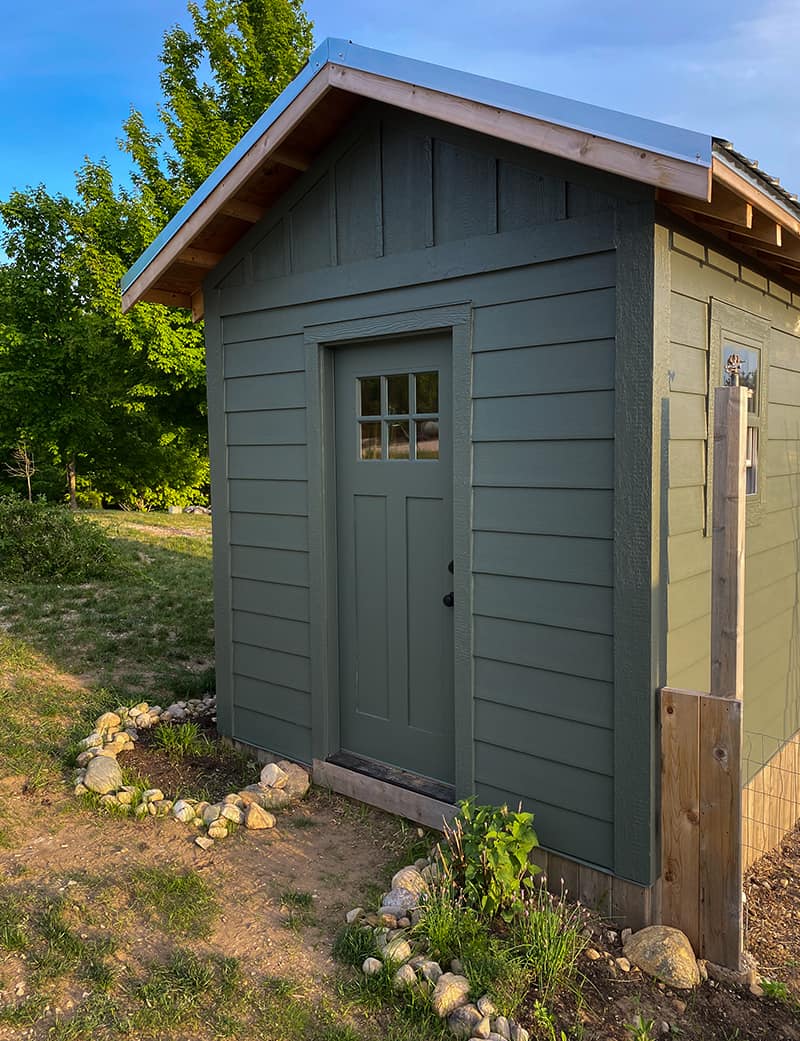
Other Details About Our Coop:
Here are questions and things we have received about materials and other details for the coop if you are wanting to know some other things.
- Siding Material: We used leftover siding from the build of our home and my parent’s home. So it is a mix of a PVC siding and a LP siding.
- Paint Color: We painted the exterior in Pewter Green from Sherwin Williams
- Framing Materials: We used Cedar and Pine for all the framing.
- Roofing Materials: Steel Ribbed Corrugated System from Menard’s
- Windows: These simple ones from Lowe’s
- Door: This one from Lowe’s
- Inside Screen Door: We purchased this from Lowe’s
- Walls and Flooring: for the walls and floor we used plywood and sealed and painted the floor with high gloss paint we had leftover
FAQs
What do chickens like to sleep on?
Chickens like to sleep on a roosting perch that is elevated off the ground. Roosting is a natural behavior for chickens, and it helps them to feel safe and secure while they rest.
What is the best thing to put down in a chicken coop?
The best thing to put down in a chicken coop is a good quality bedding material that is safe, absorbent, and easy to clean. Here are some popular options for chicken coop bedding:
- Pine shavings: These are a popular choice for chicken coop bedding because they are absorbent, easy to find, and relatively inexpensive.
- Straw: Straw is a good option for bedding because it is soft and comfortable for chickens to walk on, and it is also absorbent. However, it can be messier than other options.
- Hemp bedding: Hemp bedding is becoming increasingly popular as it is highly absorbent, dust-free, and compostable.
- Sand: Sand is another option for chicken coop bedding. It is very absorbent and easy to clean, and it also discourages the growth of harmful bacteria. However, it can be a bit heavy to work with and can be more challenging to clean out of the coop.
Regardless of the type of bedding material you choose, it’s essential to ensure it is clean, dry and changed regularly to maintain good hygiene and prevent the growth of harmful bacteria.
Should my chicken coop have a floor?
Whether or not a chicken coop should have a floor depends on the specific needs of your flock and your preferences as a chicken owner. Here are some pros and cons to consider:
Pros:
- Easier to clean: A coop with a solid floor is generally easier to clean because you can simply sweep or scrape the floor and dispose of the bedding material and manure.
- Protection from predators: A floor can provide an additional layer of protection against burrowing predators such as rats or weasels.
Cons:
- Trapping moisture: If the floor is not made of a permeable material, moisture can become trapped inside the coop, leading to a damp and unhealthy environment.
- Harder to move: Coops with floors can be heavier and more difficult to move if you need to relocate the coop or adjust its position in the yard.
- Can be more expensive: Coops with floors generally require more materials and labor to build, which can make them more expensive.
Ultimately, the decision of whether to have the floor in your chicken coop depends on your specific needs and preferences as a chicken owner. If you live in an area with many predators, a solid floor may provide added protection for your flock. And f you prefer a more natural environment for your chickens or live in a dry climate, you may prefer a coop without a floor.
If you liked this article about the best chicken coop ideas inside, consider checking out these other articles below:
- 18 Incredibly Creative Chicken Coop Ideas
- How to Create a DIY Chicken Waterer
- Best Tips For Raising Chickens – Guide to Backyard Chickens
- What to Feed Chickens
Get your daily dose of gardening inspiration and education by following Fresh Exchange in IG, Pinterest, FB & YouTube and podcasts. Follow us now and start growing!
Want to take your gardening skills to the next level? Join the Fresh Exchange community and gain access to our exclusive gardening courses that will teach you everything you need to know to create a thriving garden. Sign up today and start your journey toward creating the garden of your dreams!
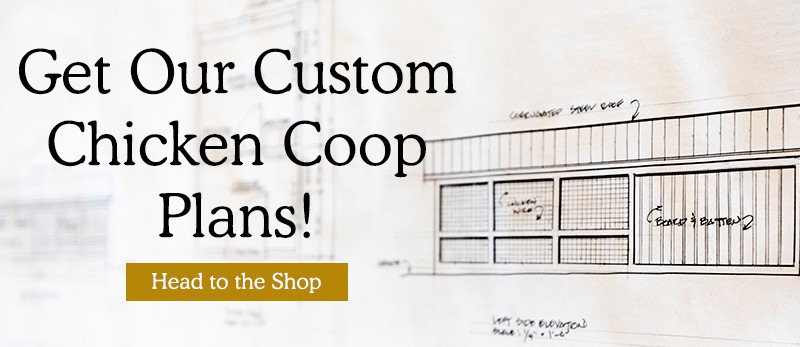
All of these ideas were considered when we designed our chicken coop, and if you want to take the guesswork out of designing yours from scratch. My dad who is a licensed contractor created DIY Chicken Coop plans you can use along with a full material list to make the process that much simpler. You can head to our shop to purchase the DIY chicken coop plans and start easily building the coop before your baby chicks arrive.
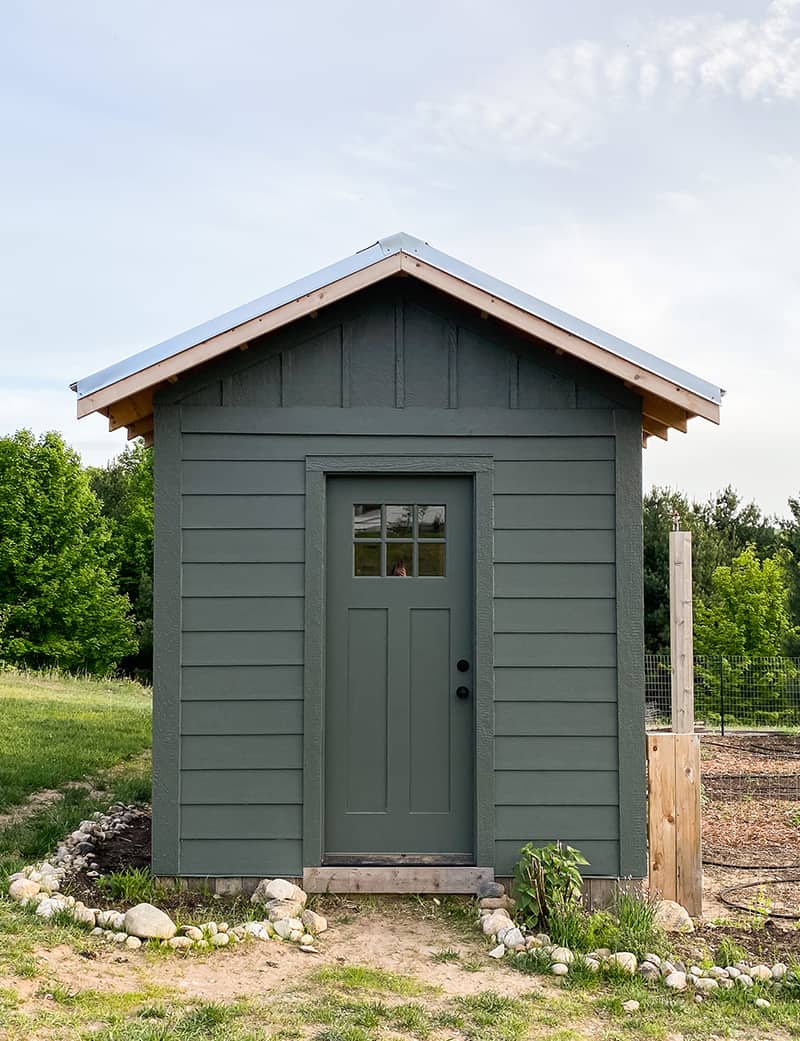
If you want to hear more you can listen to the podcast episode all about our Chicken Coop Design and Build process. I give plenty of these tips and more to help you figure out how best to design your chicken coop for your backyard chickens.


